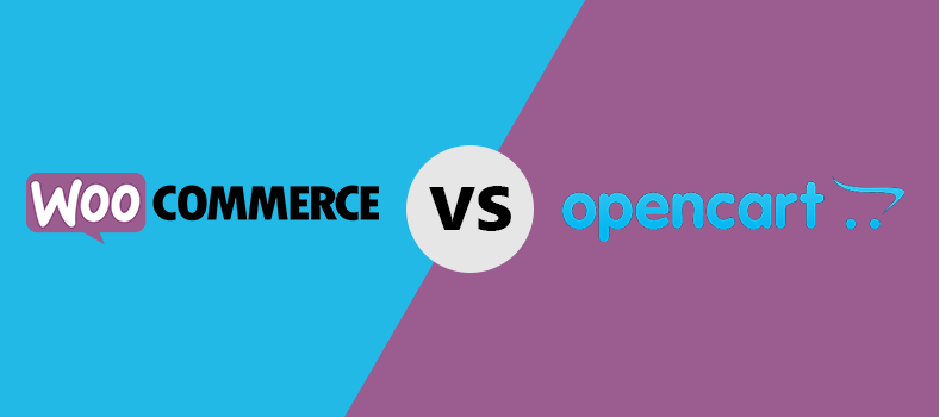Introduction
Modern enterprises have many options when it comes to selling their goods and services online. The ongoing trend of digital transformation is changing the way consumers engage with their favorite brands. Customers expect the experience to be seamless, engaging, omnichannel, and personalized. Choosing the right platform is a critical step in the path to success for any business. Complexity in platform implementation, configuration, search engine optimization, and support are important considerations.
Two of the most popular e-commerce engines on the market today are WooCommerce and OpenCart.
WooCommerce is an open-source e-commerce engine built on the popular WordPress platform and offers many features out-of-the-box, including secure payments, configurable shipping options, and more. If your business already utilizes a WordPress website, adding WooCommerce is cost-effective and straightforward.
OpenCart is a standalone, open-source platform. It offers some built-in search engine optimization, extensions, and free updates.
WooCommerce vs OpenCart: Side by Side
Search Engine Optimization
It doesn't matter how great your products and services are if no one can find your store. Search engine optimization (SEO) is how visitors will find your website organically. These visitors come from searches on Google, Bing, and other search engine providers.
As a WordPress plugin, your store takes advantage of all the built-in SEO capabilities that WordPress offers. You can build upon those foundational capabilities, however. To do that, you'll need to use WordPress tools or other SEO plugins like Yoast SEO to write product names and descriptions for search engines to find.
OpenCart also boasts built-in SEO capabilities such as SEO-friendly URLs, keywords, and more. You can also find SEO extensions on the OpenCart Marketplace. One example is the Complete SEO Package that adds advanced SEO capabilities for your store.
Ease of installation
There are multiple ways to install WooCommerce on your WordPress website. The most popular method is the automatic installation option. To perform an automated installation, you do so from the Plugins page of your WordPress Dashboard. Search for WooCommerce and click to install. Some hosts have WooCommerce pre-installed and offer a custom packaged solution. There is also the manual installation method if you prefer to do it yourself.
Installation OpenCart is not relatively as seamless as a WordPress Plugin. However, the company offers a step-by-step installation guide that makes it easy to follow. Successful implementation of OpenCart does require some pre-installation steps. First, download the package from the OpenCart website. Then upload it to your web server. The last pre-installation step is to create the MySQL database for the store to use. With those steps completed, you can launch the auto-installer from your web browser. You then follow the steps to complete the installation.
Customization
WooCommerce offers many customization options for your store. Options include design and site structure as well as payment and shipping options. It supports Stripe, PayPal, Square, Amazon Pay, Apple Pay, Google Pay, subscriptions, and deposits.
You can sell anything from simple physical products to members-only digital content. It allows many product variations, bundles, and more. Also, the official WooCommerce Marketplace has hundreds of extensions. These extensions add even more capabilities to your store. Categories include marketing, shipping, payments, store management, themes, and more.
OpenCart offers powerful store management capabilities for your store. This includes the ability to manage products, users, multiple stores, and more. It also comes with a built-in affiliate marketing system. This enables affiliates to promote your products and earn commissions. You can create discounts, coupons, and special promotions to increase sales. It supports 36 payment methods by default, with hundreds more available via the Marketplace. The official OpenCart Marketplace offers even more customization options. You can find themes, languages, payment gateways, shipping, reports, and more.
Multiple Stores
Managing multiple stores via WooCommerce is not something the plugin offers out-of-the-box. However, there are additional plugins you can install to do so. Some examples are the WordPress Multisite Plugin for WooCommerce and the WooCommerce Global Cart. So it is possible, although not that simple to do.
Supported product types
WooCommerce offers the following product types by default: Simple product, Grouped product, Virtual product, Downloadable product, External/Affiliate product, and Variable product. You can add other custom product types using plugins—for example, subscription products, bookable products, membership products, bundled products, and auctions.
OpenCart also offers many of the same product types by default and through extensions from the Marketplace.
Extensions and plugins
The official WooCommerce boasts hundreds of free and paid extensions to help grow your store. It also features curated collections for everyday use cases like developing your business or launching your store. The primary categories include marketing, shipping, payments, store management, themes, and more.
The official OpenCart Marketplace boasts over 13,000 extensions available to download. You can find themes, languages, payment gateways, shipping, reports, and more.
E-commerce Website Summary: WooCommerce vs OpenCart
Both platforms are great solutions. Both have been around for a long time and offer great features and support. Which is right for your business? Are you starting from scratch or migrating a store from another platform? Do you have multiple stores or planning just one? Do you already have a WordPress website where you want to add e-commerce capabilities? Do you have technical skills? The answers to these questions will likely make a choice obvious for your store.
If you're still not sure, consider seeking out e-commerce consulting services. Such services can help you evaluate your current situation, particular needs and guide your decision-making.
Conclusion
Running an online store can be a complicated process, even with easy-to-use platforms like WooCommerce and OpenCart. You have to install, configure, and design everything before you can start selling your products. And when your current platform is costing more than what it's making, you know it is time to migrate to a new one.
Whether is Magento, Shopify, BigCommerce, WooCommerce, etc. Chetu here to assist you to make sure the process runs smoothly, so you do not have to worry about security or maintenance. Whether it is existing content, develop an API or your entire eStore catalog, we can help you.


 Table of Content
Table of Content










